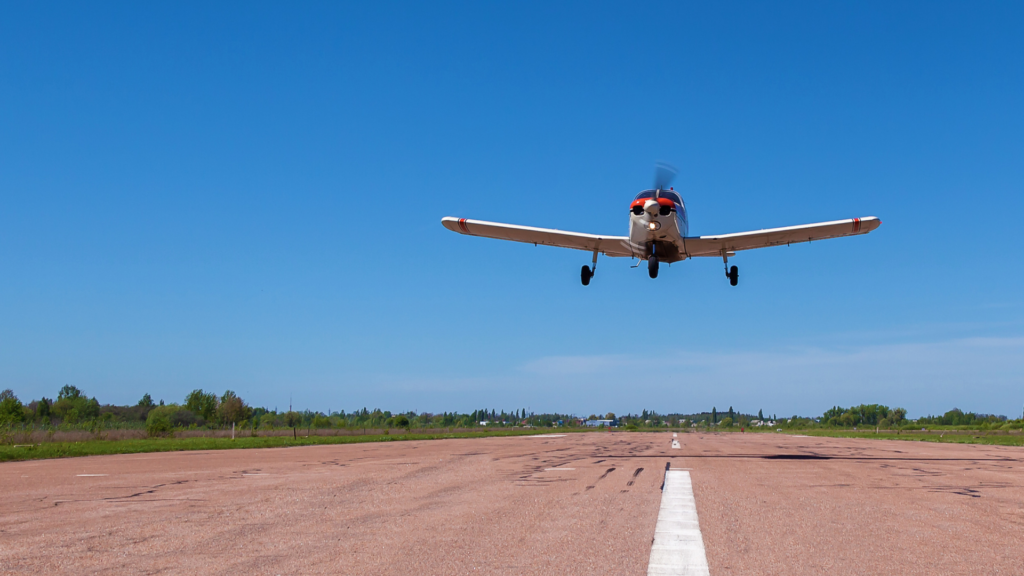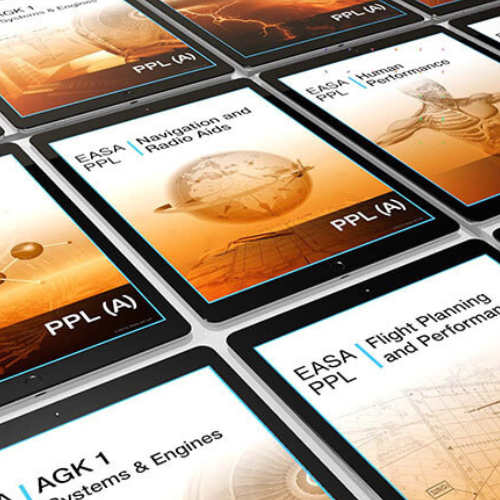Choosing Between PPL and LAPL for Pilot Training
If you are considering training to become a private pilot, you may wonder whether you should choose the Private Pilot Licence (PPL) or the Light Aircraft Pilot Licence (LAPL). Let’s take a closer look at what the difference is.
The Private Pilot Licence (PPL) and the Light Aircraft Pilot Licence (LAPL) are two types of pilot licences that cater to different flying needs and aspirations within the European Aviation Safety Agency (EASA) framework.

Private Pilot Licence (PPL)
The PPL is a type of pilot licence that allows the holder to operate aircraft as the Pilot in Command (PIC) on non-commercial flights. PPL holders can fly a wide range of aircraft, depending on the specific ratings they’ve added to their licence, such as single-engine, multi-engine, or specific types of aircraft. The PPL is recognized internationally and can be the foundation for advancing to commercial pilot training. The requirements for obtaining a PPL include a minimum of 45 hours of flight training, passing a series of theoretical exams, a medical examination, and a skill test.
Light Aircraft Pilot Licence (LAPL)
The LAPL is a more restrictive pilot licence compared to the PPL, aimed primarily at recreational flying within the European Union. It allows holders to fly light aircraft up to a maximum takeoff weight of 2000 kg, carrying a maximum of 3 passengers, meaning the aircraft can have a total of 4 occupants including the pilot. The LAPL has more lenient medical requirements than the PPL and requires less flight training, with a minimum of 30 hours needed before taking the skill test. However, the LAPL is not recognized outside of the EASA member states, and its holders have more limitations on the types of flights and aircraft they can operate.
Training Hours and Instruction Requirements
The theoretical knowledge instruction and examination for both the Light Aircraft Pilot Licence (LAPL) and the Private Pilot Licence (PPL) cover the same core subject areas. This ensures that all pilots, regardless of whether they are pursuing an LAPL or a PPL, receive a comprehensive education that prepares them for safe flight operations.
The flight training requirements for the LAPL and the PPL highlight the different levels of proficiency and experience aimed for each licence. For the LAPL, candidates must complete at least 30 hours of flight training. This is broken down into a minimum of 15 hours flying with an instructor (dual flight instruction) to learn the essentials of piloting and navigating an aircraft, alongside 6 hours of flying solo. These solo hours are crucial for gaining confidence and honing the skills needed to operate an aircraft independently, albeit under less complex conditions and shorter distances.
In contrast, the PPL demands a more extensive flight training program, requiring a minimum of 45 hours. This includes at least 25 hours of dual flight instruction, providing a deeper dive into flying techniques and knowledge due to the PPL’s broader operational scope. PPL candidates also need at least 10 hours of solo flight time, which is not only about mastering the aircraft, but also about improving decision-making skills and preparing for longer and more challenging flights that a PPL holder might undertake.
Remember, these are minimum hours only. Most people require more training than minimum.
Medical Certifications
The LAPL requires a Class 2 or LAPL medical certificate, which is less stringent than the Class 2 medical certificate required for the PPL. If you plan to become a professional pilot some day, you may want to get the Class 1 medical certificate right away. The class 1 medical includes the Class 2 medical.
Upgrading to PPL after you have got your LAPL
For those holding a LAPL and aiming to transition to a PPL, it is mandatory to accumulate at least 15 hours of additional flight time in aeroplanes after obtaining the LAPL(A). This progression includes a minimum of 10 hours of flight instruction as part of a structured training program provided by either an Approved Training Organization (ATO) or a Declared Training Organization (DTO).
The curriculum for this transition specifically mandates a minimum of four hours dedicated to supervised solo flight. Within these solo hours, at least two hours must be allocated to solo cross-country flights. A key requirement of the solo cross-country flight is to cover a distance of at least 270 km (approximately 150 nautical miles), which includes executing full stop landings at two distinct aerodromes other than the departure aerodrome.
This requirement is designed to ensure that transitioning pilots develop and demonstrate a comprehensive set of skills and competencies necessary for the broader privileges afforded by the PPL(A). These include longer distance navigation and the ability to independently manage flights to various aerodromes.
LAPL vs. PPL: A Comparative Conclusion
In summary, the PPL offers broader flying privileges and international recognition, making it suitable for those who aim for more flexibility or a pathway to a career in aviation. The LAPL, on the other hand, is ideal for individuals looking to enjoy the pleasure of flying lighter aircraft recreationally within Europe, with less stringent training and medical requirements.

Theoretical knowledge course for the private pilot licence
Included in the course
- Three years of access to the e-books via the Padpilot e-Reader
- One-year access to online progress tests and final exam
- One-year access to the examination question database from Aircademy
- Instructor support throughout the course
- Course completion certificate
- EASA Private Pilot Licence (PPL): A Guide to Training Requirements and Costs
- How to Become a Professional Pilot in Europe: A Comprehensive Guide
- Pilot shortage in Europe: What you need to know
- Unlock the Benefits of Distance Learning for Your EASA Private Pilot Licence
- English Language Proficiency for Pilots
